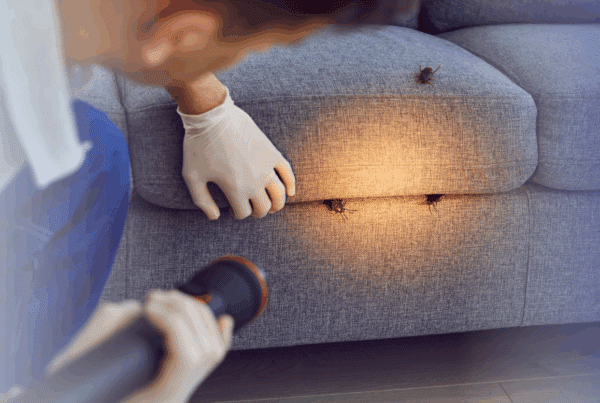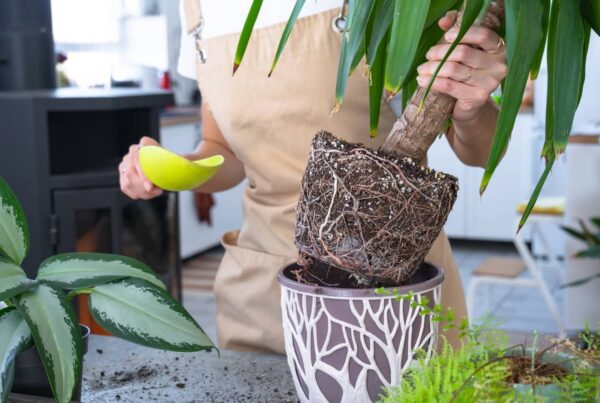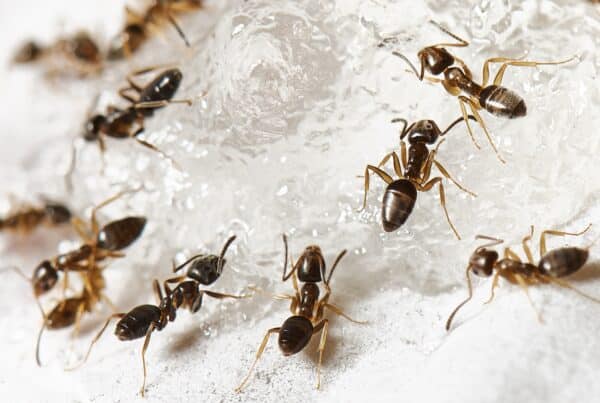
Drain flies are a nuisance that can quickly go from a few stray bugs to a full-blown home infestation. If you’ve noticed tiny flies hovering around your sinks and drains, you’re not alone in dealing with these pests. Understandably, your first instinct may be to pour bleach down the drain to kill the flies. But is it an effective way to eliminate this pest?
In this article, we’ll explore whether bleach can eradicate drain fly larvae and adults. You’ll learn exactly what attracts drain flies, pro tips for using bleach safely and correctly, and alternative prevention methods to keep your home free of flies.
What Are Drain Flies?
Drain flies, also known as moth flies, are small fly species that commonly invade homes. Adults are only 1 to 5 mm long with fuzzy wings and bodies. Their appearance earns them the nickname “moth flies”, though they are not related to clothes moths.
The drain fly life cycle starts when females lay eggs in moist organic buildup inside drains or pipes. Larvae hatch and feed on bacteria, fungi, and microbes until they eventually pupate into adults. They then emerge through cracks or pipe joints, ready to mate and start the cycle again.
Drain flies don’t bite humans, but they can quickly become a nuisance. They swarm sinks, tubs, and other damp areas where they breed. Drain flies laying eggs inside pipes can also contribute to slow or clogged drains over time. Keeping your drains free of organic buildup through regular cleaning helps break the drain fly life cycle and prevents infestations.
Getting rid of drain flies requires removing or treating the moist organic matter they depend on. This is why many homeowners reach for bleach as an easy drain cleaner and disinfectant – our mission is to find out whether or not they’re on track!

Bleach vs Drain Flies: What’s the Impact?
Bleach is a commonly used household cleaner and disinfectant. The active ingredient, sodium hypochlorite, acts as a powerful oxidizer that can kill bacteria, viruses, and fungi. Using bleach for cleaning and sanitizing is second nature to many homeowners.
But how exactly does bleach work to kill pests like drain flies? When sodium hypochlorite in bleach contacts organic matter, like drain gunk and biofilms, a chemical reaction occurs. The oxidizing properties in bleach break down proteins and enzymes and disrupt cell structures. This destroys microbes and also insect eggs and larvae.
However, there are a few issues with relying solely on bleach to kill drain flies:
- Bleach does not penetrate fully into sludge deep inside pipes where flies breed. Any larvae protected by debris and deeper in the pipes can avoid contact and survive.
- Drain flies can develop resistance to sodium hypochlorite over time, rendering bleach ineffective.
- Bleach in drains can kill beneficial bacteria that feed on organic matter and help prevent future buildup and fly infestations.
- Drain flies and larvae killed by bleach can decompose and cause more blockages.
While bleach has disinfecting powers, using it alone is not a silver bullet against stubborn drain fly infestations. For the best results, bleach should be combined with other drain cleaning methods and preventive measures.
Improving Your Approach to Drain Flies
If you want to use bleach against a drain fly infestation, there are some best practices to follow. Firstly, bleach should always be diluted for safety.
You can mix 1/4 cup bleach per gallon of water to achieve disinfection while minimizing fumes. Carefully pour the diluted bleach solution directly into the problem drain, avoiding splashes on surfaces. Let it sit for 5-10 minutes to allow penetration into grime.
It often takes more than one round of bleaching to fully clear out drain fly breeding grounds. Consequently, plan to repeat the treatment weekly until the flies are gone. In between bleachings, pour a kettle of boiling water down the drain as well. Hot water helps melt grease and flush things through.
For a more targeted approach, secure a funnel into the drain opening or wrap a plastic bag around plumbing fixtures before pouring in the diluted bleach. This contains its disinfecting action.
Always remember to rinse pipes thoroughly after any drain treatment by flushing them with plenty of cold water. This prevents pipe corrosion over time from bleach residue. Never mix bleach with acidic products like vinegar or ammonia, as toxic chlorine gas can result.

Other Recommended Prevention and Maintenance
While strategic bleaching can help manage drain fly infestations, it shouldn’t be your only line of defense. Preventing moist organic buildup in the first place is key to avoiding fly issues.
Above anything else, make it a habit to regularly flush pipes with very hot water, preferably after greasy cooking or heavy sink usage. The heat melts fats and oils before they stick to pipes. You can also pour a pot of boiling salt water down drains weekly to scour the insides.
Keep an eye out for slime buildup in drains or any water pooling around pipe joints. Scrub visible gunk away with a stiff brush and a cleaner like baking soda. Then flush with boiling water to prevent flies from laying eggs.
Additionally, you can install drain screens to prevent food particles and other debris from slipping down. Routinely empty any built-up gunk from screens into the garbage. Keeping debris out of pipes prevents blockages and breeding grounds.
Finally, fix any leaky plumbing or cracks that allow moisture into drain systems. Drying out pipes removes the damp habitat drain flies need. Reduce moisture by running bathroom fans, using dehumidifiers, and increasing ventilation.
When to Call a Professional
If you’ve tried addressing breeding sites yourself but flies persist, it may be time to call in professional help.
Severely neglected drains with years of accumulated gunk provide the ideal environment for drain fly infestations. The extensive buildup can be extremely difficult to tackle on your own, even with boiling water and bleach. The drain system may require high-pressure water jetting or roto-rooter snaking to fully eliminate thick deposits.
Professionals like plumbers and pest control companies have industrial-strength equipment and products to treat infestations at their root cause. They can also identify any hidden breaches in pipe joints or cracks allowing flies to emerge into your home undetected. Fixing underlying structural issues helps prevent future fly problems.
Lastly, drain specialists have access to professional-grade insecticides and larvicides that are more effective at killing flies and larvae deep inside drains. The active ingredients in commercial pesticides give them lasting residual effects as well.
Conclusion
In essence, drain flies are a pesky problem that often compels homeowners to reach for bleach as an easy fix. However, relying solely on bleach to eliminate infestations typically falls short.
While bleach can penetrate and disinfect grimy buildup, it doesn’t provide lasting control deep inside pipes. A more effective approach uses strategic bleaching alongside boiling water flushes, scrubbing, and ongoing prevention methods. The key is stopping moist organic matter from accumulating so flies have nowhere to breed.
All of this being said, even the most vigilant homeowners need help from an expert from time to time. To get guidance on a drain fly infestation or to schedule preventative pest control, reach out to Honor Services in Melbourne, FL, and the surrounding areas today!



